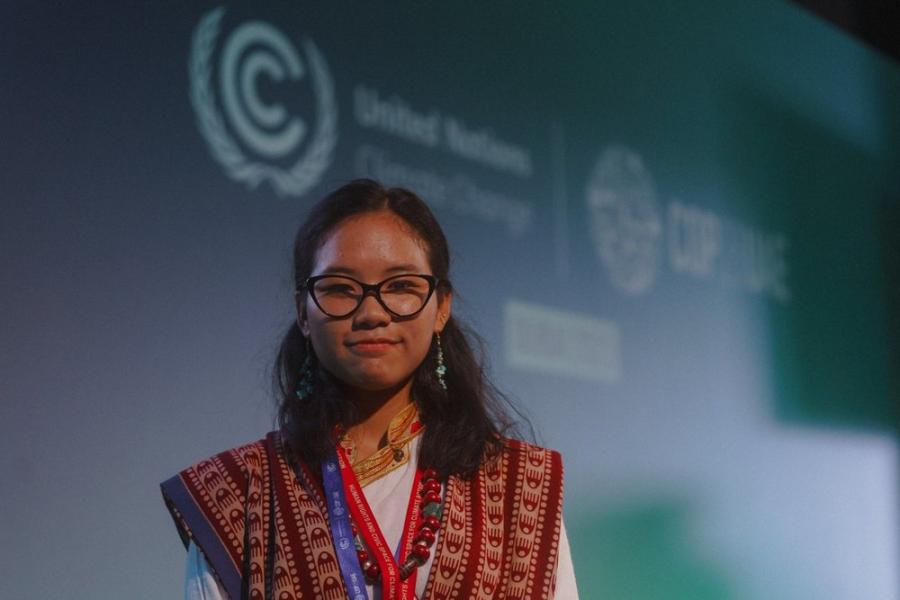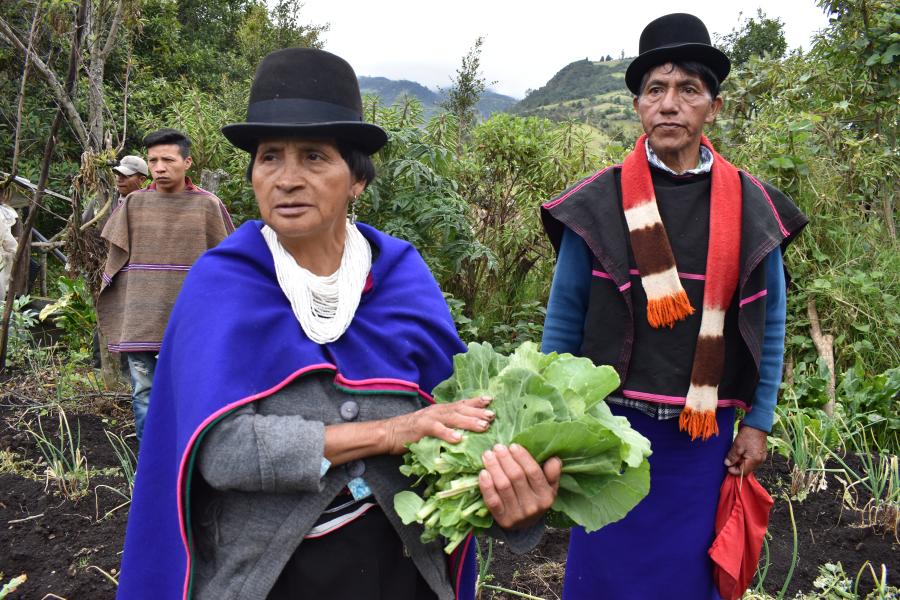For states to play a constructive role as intermediary between the individual, groups and the international order, they have to conform to certain general principles, primarily derived from the UN Charter and subsequently elaborated by the relevant UN bodies.
Conceptually and institutionally, world order is founded on the system of nations organized in states. Admittedly, state sovereignty is becoming increasingly more porous as international organization and trans-border cooperation advance. The role of the state is declining, and this is likely to increase the possibilities for minorities to find solutions to their claims for diversity. National societies are also becoming increasingly multicultural, directly through the migration of peoples - including the growing number of local branches of transnational corporations - and indirectly through the multiple cultural influences of the electronic and other media.
Societies of the future clearly cannot correspond to past idealized versions of homogenous ethnic states. However, the state will maintain its paramount role far in to the foreseeable future as the organizing framework for law and order, and to a lesser extent for economic and social activity (for example, transnational financial institutions).
Human rights require a functioning legal order, and states will remain the main frameworks for this. States will always be held accountable for their compliance with human rights, but they need also to create the conditions for realizing those rights. The international community should help them to do this while discouraging secessionism; it should also encourage constructive accommodations between different groups within the state.
The experience of many states demonstrates that respect for minority rights reinforces the stability of the state and weakens the appeal for secession. One such example is the constitutional change made in Spain following the death of Franco in 1975 and the transition to democracy. By granting greater autonomy to regions inhabited by different linguistic and ethnic groups, Spain has almost completely eliminated the support for secessionist movement.
PROBLEMS POSED BY COMMUNAL GROUPS
Group identities become important when members of the group are under some kind of stress. Groups are therefore best understood when in conflict. The following discussion will examine four types of conflict situations.
Conflicts between a dominant center and a peripheral group constitute one major form. The most typical is the situation of indigenous peoples: groups whose traditional way of life and resource base are challenged by a dominant center that exploits the group's resource and in the process also destroys their capacity to reproduce and to develop their own culture, including language and religion.
The second category of conflict, with many variations, comprises efforts to obtain by groups that are discriminated against. Most obvious are the efforts by groups discriminated against because of their color or race, but many recent immigrants also experience discrimination on the basis of their religion or ethnic origin. Their identification as a group arises largely out of the negative attitudes held towards them by the dominant or host society. Their primary struggle is for the equal enjoyment of civil, economic and social rights. In some cases their struggle is for citizenship and full political rights.
A third situation consists of conflict between communal contenders: culturally distinct peoples, tribes, or clans in heterogeneous societies who hold or seek a share in state power. They are different from ethno-nationalists in the sense that the group or its leaders do not seek to dominate culturally or linguistically the national society as a whole, nor do they try to secede from the national society; but they seek to enhance their own position or to maintain it when challenged by other communal contenders. Therefore, the description suits well the situation in most post-colonial societies where borders were drawn rather arbitrarily by colonial powers in such a way that different ethnic groups, tribes, or culturally distinct clans came to be included within the same state. Such cases are primarily a struggle for political power and its benefits - not only for the power-holders themselves, but also those other members of the tribes or ethnic groups who are rewarded through a clientelist relationship for having supported the people in power.
In the fourth type, ethno-nationalists seek either to dominate a heterogeneous national society or to secede from it, using a relatively large and geographically concentrated ethnic group as a basis. Dominating the national society would consist in assimilating the non-dominant parts of the population into the culture and language of the dominant ethno-national group, or in excluding members of other ethnic groups from the national society, either by denial of citizenship or by outright `ethnic cleansing'.
The alternative strategy for ethno-nationalists who are unable to dominate the national society is to secede or separate from it, by establishing an independent state which their ethnic group can dominate, or by redrawing borders to become part of another state dominated by their own ethnic group.
Not all homogenizing societies are driven by ethno-nationalist efforts to dominate. Some are better characterized by a process of (imperfect) fusion, the proverbial melting-pot effect. Whether subjected to assimilationist ethno-national domination or to a process of fusion, some groups seek to defend their own cultural identity, to maintain their own language and traditions. This can be done without any intent to dominate others and without objecting to equal treatment in the common domain.
NON-DISCRIMINATION IN THE COMMON DOMAIN
A definition of discrimination influenced by developments within both the UN and the Council of Europe has been given by Tomuschat: "Discrimination is invidious treatment which introduces unreasonable classifications within the specific context of the rights concerned."
Invidious treatment. Special measures for minorities - such as access to education in their own language - usually will not lead to invidious treatment of others provided that members of the minority can voluntarily choose education in their own language or in the official language of the country. However, measures to protect minorities can sometimes led to the deprivation of others' human rights, such as when certain jobs are exclusively reserved for members of the minority.
Unreasonable classifications. Whether a distinction is reasonable must be evaluated in the context of the right concerned, the purpose of the distinction, and whether the classification is no more harmful than necessary.
Affirmative action. Transitional preferential measures can create or restore equality in the common domain, where there has in the past been a policy or practice of discrimination. They are not intended to preserve differences. They do not establish group rights, but provide rights for individuals to be used in some contexts of competition. "Affirmative action" is therefore entirely different from the measures envisaged under the 1992 Declaration on Minorities, intended to allow a lasting manifestation of difference. Instead of transitional affirmative action, the Declaration addresses the rather different issue of special measures.
Special measures. The introduction of such measures establishes a distinction between the common domain and the separate domains. Issues that may without controversy be left to the separate domains include the regulation of religious matters and standardization of minority languages. But when minorities run their own institutions, such as schools and hospitals, or hold property that they seek to reserve for minority use, numerous problems of discrimination can arise.
The scope of "common domain" depends on what is taken out as "separate domain". Groups that are powerful through the control of resources, technology and organizational skill may want to limit the area of common domain in order to preserve privileges in their separate domains. This has occurred in the past with the concept of "common affairs" in apartheid rhetoric.
PLURALISM IN TOGETHERNESS
The origin of pluralism affects its evolution. Many states in Africa and parts of Asia inherited at independence multi-ethnic and multi-religious societies that were not part of a common `state' or administrative unit until the colonial period. The initial pro-independence efforts were usually the work of broad-based multi-ethnic movements; some time after independence, however, ethnic and sometimes religious divisions usually arose.
Post-independence governments have tried a number of different approaches to managing these divisions, including controlling ethnic tension through strictly centralized and often authoritarian political control, or confidence building and power-sharing measures among the different ethnic or religious groups.
In the Americas, Australia and New Zealand, the diversity arose in other ways. The outcome of past history in North America, for example, has been a three-fold composition of the population, consisting of indigenous peoples, voluntary immigrants and their descendants, and slaves. The black North American population has focused mainly on preventing racial discrimination and the preservation of their separate existence.
In Europe, particularly in Central and Eastern Europe, a major factor in the formation of minorities has been centuries of of intermittent warfare accompanied by the drawing and redrawing of borders. Empires have been formed, expanded, and disintegrated. Minority situations are the result less of emigration to "new" territories than of internal migrations with empires or federations since dissolved; and of repeated changes of the political units within which settled populations find themselves. When the large entities disintegrate, the demographic map reveals a mixture of ethnic groups; some live compactly together, while in other areas members of different ethnic groups are interpersed; large numbers do not belong to any single ethnic group, because they are descendants of mixed marriages. As a general rule, peripheral areas (often rural) have the least diverse ethnic composition, whereas urban centers often have the most mixed populations.
The obligation of states to protect the existence and identity of minorities can take several forms. Two issues can be mentioned here: education and political participation.
The content of education is controversial because it affects both the preservation of minority identity and socialization into the common values of the national society. Guidance can now be taken from Article 29 of the Convention on the Rights of the Child, which spells out the requirement to education: it shall be directed to "the development of respect for the child's parents, his or her own cultural identity, for the national values of the country in which the child is living, the country from which he or she may originate and for civilizations different from his or her own." Also important is "the preparation of the child for responsible life in a free society, in the spirit of understanding, peace, tolerance, equality of sexes, and friendship among all peoples, ethnic, national and religious groups and persons of indigenous origins."
The issue of the institutional participation of minorities in the political and legal system brings us to questions of "consociational democracy" (power-sharing and constitutional devices to ensure effective participation).
"Government by the people" means that everyone is entitled to take part in political decision-making, either directly or by freely chosen representatives. Democracy should ideally serve as the best way of ensuring the peaceful resolution of conflicts, in that everyone can make their interests felt in the common political arena. The dilemma is that majorities can easily overlook the interests of minorities, even when minorities participate on an equal basis, if society is polarized along ethnic, national or religious lines. The interests of a disadvantaged minority can thus be neglected even within a democratic order.
Various devices have been developed to compensate for this problem. States participating in the seminar on minority issues held in Geneva in July 1991 by the Conference on Security and Cooperation in Europe (CSCE) identified the following positive approaches pursued by European democracies: * advisory and decision-making bodies in which minorities are represented, in particular with regard to education, culture and religion; * elected bodies and assemblies of national minority affairs; * local and autonomous administration; * self-administration by a national minority of aspects concerning its identity; * decentralized or local forms of government; * permanent mixed commissions, either inter-state or regional, to facilitate dialogue between border regions.
The recently-introduced notion of consociational democracy sums up the many variations in democratic experience that seek to accommodate pluralism. It is a form of power-sharing through a multiple balance of power among the segments of a plural society, allowing for decision-making by the `grand coalition method'. The concept of consociational democracy is seen as an alternative to the majoritarian type of democracy, and more suitable for good government in plural societies divided by ethnic, linguistic, religious or cultural differences, where the groups are clearly identifiable. Consociational democracy is built on the principle of power-sharing and a certain degree of self-administration for each group.
PLURALISM BY TERRITORIAL SUBDIVISION
`Territorial subdivision' is used here as a generic term to refer to all forms of local self-government within a sovereign state. It can include federalism, autonomy, and regional and municipal local government.tional agreement? What is the scope of authority or competence for the regional or local self-government bodies?
The origins of territorial subdivisions are at least twofold: in some cases, several units have joined together, either voluntarily or as the result of coercion, but the different units have reserved for themselves or been given some scope of authority within the territorial region. In other cases, a centralized system has been found to be too cumbersome or has caused too many conflicts; consequently, a territorial subdivision has been adopted to avoid governmental/bureaucratic overload or unnecessary conflicts.
Intermediate cases are those where the incorporation of a particular region or enclave has been the subject of international dispute, resulting in a compromise arrangement of autonomy under some form of international guarantee. Territorial subdivisions with a pluralistic intent include federative systems based on differences in national or ethnic (or sometimes also religious) identity. Past examples were the Soviet Union and Yugoslavia; a present example is China.
A different approach, providing for a territorial subdivision to accommodate the concerns of different nationalities or ethnic/linguistic groups, can be found in the constitution of Spain, probably one of the most successful innovations of recent times. Switzerland provides us with another, somewhat different example; and Belgium gives us another very interesting model that should be studied for the lessons it might give to other plural societies. India is of great interest because of the attention given to linguistic divisions, and also for its efforts avoid a form of political mobilization grounded in religious communalism.
Elsewhere, for example in Greenland, the Faeroes and the Aland Island, specific autonomy arrangements have been made for minorities or groups to enjoy self-government, or `home rule', and to extend the scope of self-government over time. Some of these are autonomies formed on the basis of international negotiations or disputes.
Other territorial subdivisions, made without a pluralistic intent, can have a pluralistic effect. This can happen when local governments are given a high degree of delegated power, where the purpose is governmental and administrative decentralization. The effect can be that minorities living compactly together, in areas where they form the majority, are able to develop material and cultural aspects of their identity.
Numerous territorial subdivisions, however, have neither the intention nor the effect of pluralism. This applies to federations that are not based on language, ethnicity or nationality but result from the historical process by which members of the same ethnic groups in the past initially settled in or organized separate political units. Examples are Australia, the German Federal Republic and the United States. In these cases, federation is maintained partly because of tradition and partly for administrative and political convenience. Since minorities do not have a dominant position in any such federal units, the federal framework does not support pluralism in ethnic, national or religious terms.
Territorial subdivision is not without problems from a human rights perspective. For example, is there freedom of movement and residence for all inhabitants, or is that freedom (particularly of residence) restricted to the ethnic, linguistic or religious group concerned? Similarly, is there freedom of employment, a right to own property, including land and other fixed assets, and a right to participate in economic activity within the different regions, or are there restrictions on ethnic, religious or linguistic grounds?
The way any such territorial subdivision is brought about requires attention. Inhuman policies of `demographic homogeneity', leading to population exchanges and forced removal, are blatantly in violation of contemporary human rights.
The displacement directed against Muslims in Bosnia-Herzegovina is the most serious contemporary case in point and has to be redressed. Those who have occupied the homes or properties of Muslim or other groups they have displaced should be required to participate in the rebuilding of the homes to facilitate the return of the displaced persons. It is essential to reject `ethnic cleansing' measures, which constitutes gross and systematic violations of human rights.
Attention should also be paid to the negative consequences of population transfer aimed at altering the demographic structure in a given region. However, once people have settled in good faith, they should as individual human beings be given full rights in that territory when its political status changes.
Article copyright Cultural Survival, Inc.



